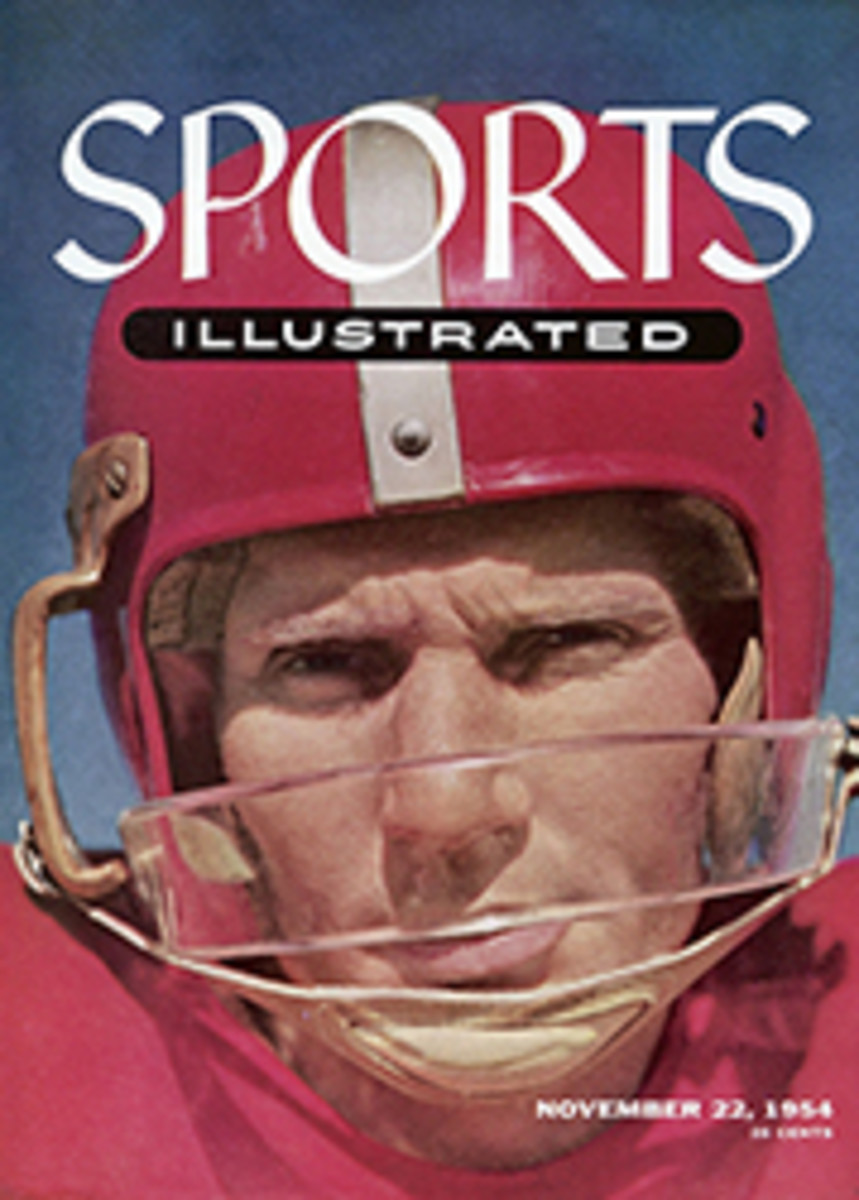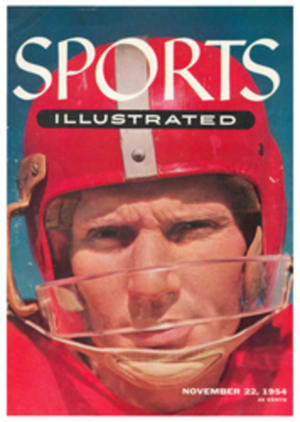
HERE'S TAP DAY
A joint ordeal is scheduled this Monday with major league officials and baseball writers battling for the role of star sufferer. The officials will meet at New York's Biltmore Hotel to start the annual "draft" of talent from the minor leagues. Each official has received, and presumably studied, a 69-page list of draftable players prepared by the Commissioner's office. The draft tests each official's ability to remember and to choose. It combines the main features of a final examination and tap day.
When Monday wanes and the draft is ended, the reporters' anguish starts. The newsmen will be required to write as much as 1,000 words on the enlistment of such players as George Schmees, outfielder. Schmees, the No. 1 draft choice in 1951, became famous as soon as his selection was announced.
"Who's Schmees?" shouted a puzzled newspaperman.
"God bless you," said his neighbor. That was George Schmees' moment in the sun. He failed to make the St. Louis Browns' outfield, turned to pitching and was traded to Boston. There he couldn't make the Red Sox's pitching staff. Schmees was back in the minors again the following summer. He is eligible to be drafted again Monday.
The draft, and the draftees in it, are not what they used to be, as Ty Cobb might say. The bargains are harder to come by, but that the draft has survived at all is remarkable. It began in the late 19th Century and today not much is heard of early contemporaries of the draft such as the Open Door Policy, Tony Pastor's and the battleship Maine.
The actual process of drafting entails simply selecting players from a list. Major leaguers pick and minor leaguers yield the contracts of players for a sum fixed by baseball law. The sum varies from $15,000 for Pacific Coast League draftees to $2,000 for Class D ball players.
No more than one man may be drafted from any one team, and the clubs make their picks in reverse order of the season standings. The leagues alternate first pick annually and on Monday the Kansas City X's, successors to last-place Philadelphia Athletics, will make the opening choice. Then the Pittsburgh Pirates, last in the National League, choose. So it goes until the New York Giants have picked, and then the whole thing starts over again until everyone has made all the choices he wants or all the major league rosters have reached the 40-player limit.
The original idea of the draft resembled the original idea of the hammer lock. In the 19th Century the major leagues forced a draft upon the minor leagues to keep the line clear between major and minor. The theory was to prevent a minor league club from keeping good young ball players until they had become great young ball players and given, say, East Walla Walla a "minor league" team of major league caliber.
The theory proved practical and the draft was a pillar of baseball's complex structure until Branch Rickey, perhaps the most practical man in baseball history, hit upon something that replaced the old pillar with a new one. Rickey took thought one night and invented the farm system.
Today nearly every minor league team works with a major league team. Some are owned outright; others are tied to big brother by working agreements. Most of the standout players in the majors today are products of the farm system. When Rickey built the great St. Louis Cardinal teams of the 1930s, he built them with farm products. Dizzy Dean was one. Joe Medwick was another. A trend was established and current major leaguers from Stan Musial to Willie Mays are up from the farms.
On their way up, promising young players are protected from the free-for-all of the draft by a thoughtful network of contract options. A player on a major league roster can be optioned to a minor league team three times and remain immune to draft. The best youngsters are almost always covered by these options. Nonetheless, bargains are occasionally found in the yearly draft. Oversights, mistakes and sheer luck all work to produce surprises. No baseball man will take the draft lightly on Monday.
Considered strictly as an investment, it is doubtful if anything short of a uranium strike ever exceeded the return the Philadelphia Phils got for $7,500 in the 1931 draft.
The Phils made their investment when they tapped Al Todd, a catcher, from Dallas. Todd played with the Phils for four seasons, hit .318 once and was traded to the Pittsburgh Pirates for two players...
One of the two ex-Pirates, Pitcher Claude Passeau, stayed with the Phils for four years and was traded to the Chicago Cubs for an unannounced sum of cash and three more players...
One of the three ex-Cubs, Pitcher Kirby Higbe, was traded to the Brooklyn Dodgers for another three players and an announced $100,000...
One of the three ex-Dodgers, Catcher Mickey Livingstone, was traded to the Cubs for Pitcher Bill Lee...
Lee was sold in 1945 for $7,500 and the Phils had their original investment back. They also had a great deal more.
Returns on the $7,500 draft of Todd totaled use of ten players for periods up to four years each, plus an unannounced sum plus $100,000.
It isn't likely that a capital gain like Todd will be drafted Monday. Nor is it likely than an organization will slip as the New York Giants once did and allow a name like Hack Wilson to appear on the list. Wilson, drafted by the Cubs in 1925 after the Giants thought they had him safely hidden, hit 56 home runs five seasons later.
Yet on the 1954 list there may be someone who doesn't belong, who's too good, who should have been covered up but wasn't. It's a long list. Between now and Monday lights will burn late in major league offices.
[originallink:10457556:40834]
PHOTO
AL TODD WAS DRAFT'S BIGGEST BONANZA
ILLUSTRATION
"You think you're God or something?"

